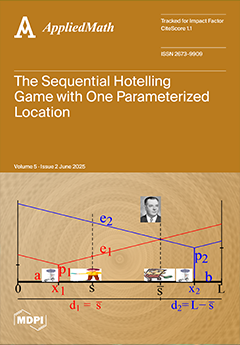Schröder based series for the principal and negative one branches of the Lambert
W function are defined; the series are generic and are in terms of an initial, arbitrary, approximating function. Upper and lower bounds for the initial approximating functions, consistent with convergence,
[...] Read more.
Schröder based series for the principal and negative one branches of the Lambert
W function are defined; the series are generic and are in terms of an initial, arbitrary, approximating function. Upper and lower bounds for the initial approximating functions, consistent with convergence, are determined. Approximations for both branches of the Lambert
W function are proposed which have modest relative error bounds over their domains of definition and which are suitable as initial approximation functions for a convergent Schröder series. For the principal branch, a proposed approximation yields, for a series of order 128, a relative error bound below 10
−136. For the negative one branch, a proposed approximation yields, for a series of order 128, a relative error bound below 10
−143. Applications of the approximations for the principal and negative one branches include new approximations for the Lambert
W function, analytical approximations for the integral of the Lambert
W function, upper and lower bounded functions for the Lambert
W function, approximations for the power of the Lambert
W function and approximations to the solution of the equations
cc =
y and
CC =
ev, respectively, for
c and
C.
Full article





